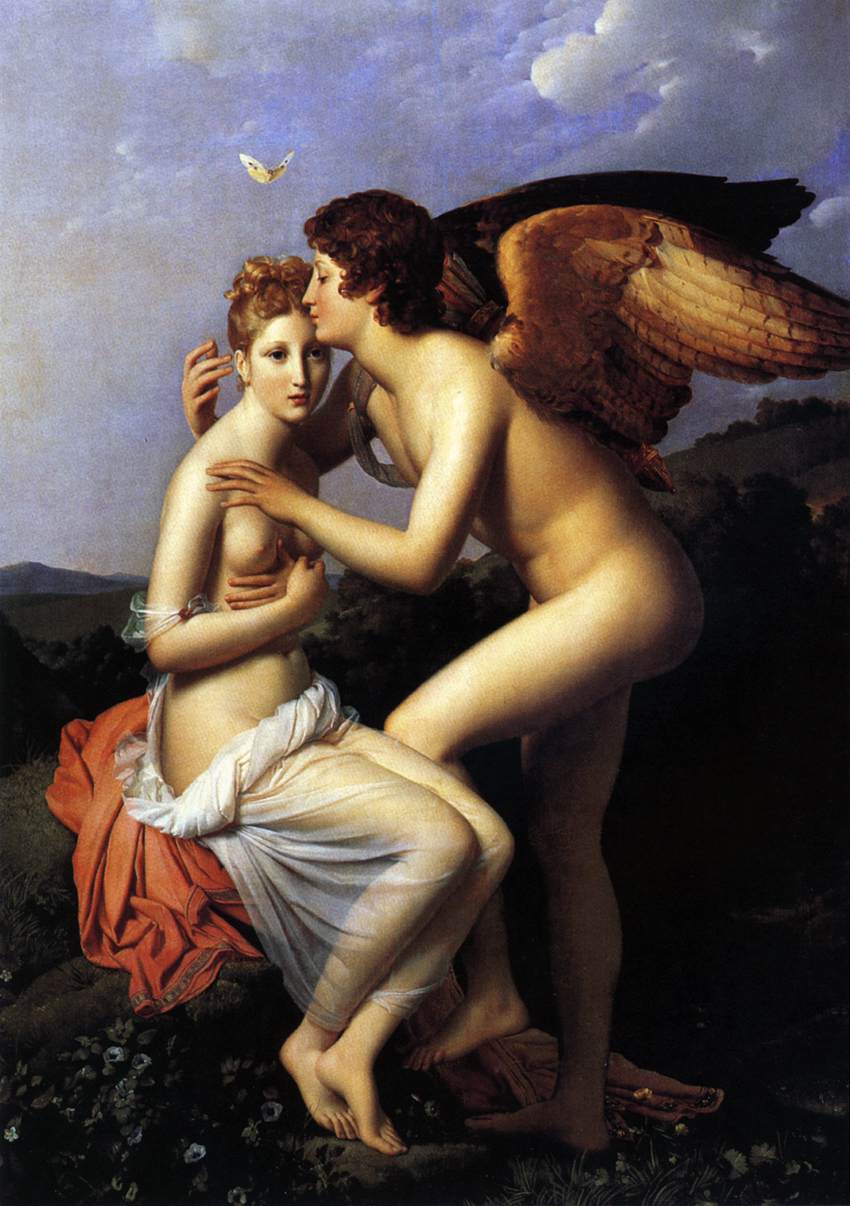Amor and Psyche, the mythological tale as told by Apulejus, interpreted by E. Neumann. How can we reflect on it today? A presentation about the masculine, feminine and how to get it together?
Myths and tales function as keys to get the view of deep archetypal patterns. They make the seemingly invisible visible, and they come with a universal symbolic language that speaks to the deep layers within. The jungian psychoanalyst Erich Neumann (1905-1960) have seen the myth of Amor (Eros) and Psyche as a depiction of the female heroine. I read it also as a model for how men and women can create a fruitful love relationship.
What I want to point to is an ambiguity, portrayed in myth and largely in real life. My presentation is based on the Neumann’s text of Amor and Psyche (1952/1971.) Psyche breaks out from an existence depicted as paradise. Both Eros (Amor in the saga) and Psyche must dare breakup as a positive action towards increasing awareness – out of infatuation paradise, towards mature love. When Psyche sees Eros in the oil lamplight, she leaves the unconscious stage. Thus saving both of them from being together in darkness and ignorance. She sets out on her long journey to mature. Eros flees (escapes?) back to his mother, Aphrodite (Venus in the saga), where he spends time looking after his burns from the oil lamp, before he heads out to search for Psyche. The separation is a fact. Both need to mature individually before they can be reunited.
In couple relationships, we often see it as a struggle and an exploration of how much diversity, variety, distance and closeness the couple needs to simultaneously retain the integrity and respect for each other. Psyche embarks on her long journey towards deeper femininity. But to cope with the trials she meets require other hero virtues than manhood. Instead of defeating the dragon by the sword, Psyche utilizes knowledge and imagination. Her first task represents an equity process; she learns to find her way in the masculine world. A journey into the underworld ultimately means a direct struggle with the central feminine principle – with Aphrodite and Persephone (goddess who spends half the year above ground and the other half in the underworld). When Psyche has fetched Persephone’s cosmetics, she opens the beautybox despite the ban and falls unconscious down. With help from Eros she wakes up to life. It looks like a defeat but it is a defeat turned to victory. She must open the box because she is a woman. First she sacrificed her love paradise for spiritual maturity. Now she must reconnect with the feminine in its essence. Only then can she reunite with Eros and their common daughter – Pleasure-Joy-Bliss – is born.
The myth of Amor and Psyche does not describe an episode in life, it portrays the whole life-cycle. What do modern variations of Eros and Psyche look like? What kind of creative break must today’s men and women face to be able to move forward within themselves and in the union of the male and female?
In artistic representations of the myth is the butterfly an important detail. In Greek, the word Psyche means butterfly as well as the soul. The sleeping Eros was a deadly threat to Psyche’s – the soul’s – existence. The myth’s appeal lies in its transcendental character where sexuality is included as a basis for higher mental existence. In the figures of Eros and Psyche earthly and heavenly love is united, and we need opposites, contrasts to create life and development.
References:
Apulejus, L (1960) Den Gyllene Åsnan. Stockholm: Tidens Förlag.
Neumann, E. (1952/1971) Amor and Psyche. The psychic development of the feminine. New York: Princeton University Press.
Image: F. Gérard (1770-1837) Cupid and Psyche in the first kiss.

